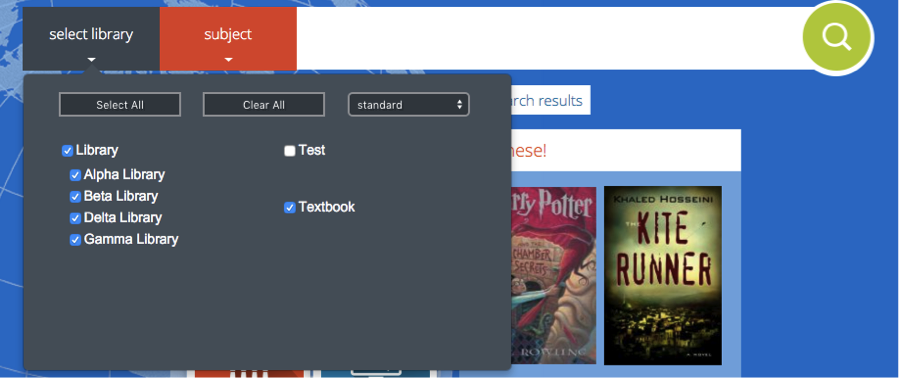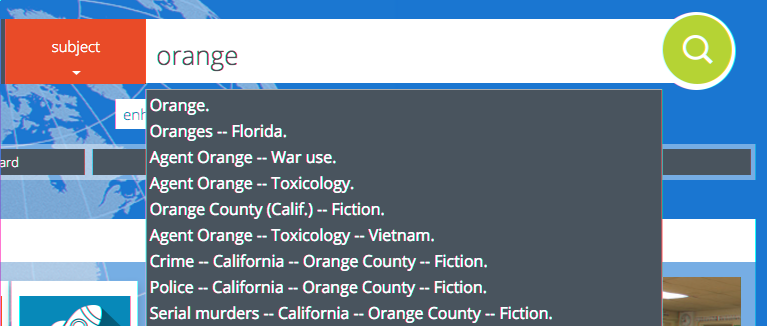Standard Search

-
Before entering a search term, check the “Select Library” and search by dropdowns.
-
"Select Library” will display all collections that have been configured for that catalog installation. Subsequent searches will search any/all selected libraries. “Standard” collections – which include bibliographic records - are displayed by default. Users may change the display to “Equipment” collections; admin users also have the option to change to “Patrons” in order to search patron records.
-
In Merged Union Catalog configurations, this will include all library catalogs that are searchable from that installation.

-
The “Search By” dropdown will display the selected search attribute: Anywhere, Author, Subject, or Title. The default search attribute may be configured in Setup > Options > “default_search”.

2. Click the search bar and begin typing your desired search term. Once the search term has been entered, press “Enter” or click the search button 
-
The “Standard Search” feature includes autocomplete functionality that will provide search suggestions as the user enters his or her search term. Autocomplete suggestions are based on the selected search attribute (Title, for example) and pulled from what is in the library collection, to ensure that patrons are being directed to items that are in the catalog.

3. Once a search term has been entered, a results list will display (please refer to The Results Page for more information).
-
The results list will include post-query filters (if available) that enable patrons to refine their search to: show only available items, toggle between libraries/collections, or filter by format, fiction vs nonfiction, reading level or publication dates.
-
If a search returns “No Results”, please check the spelling of the search term, and try again.
-
A new search can be initiated at any time by entering a new term(s) into the standard search bar, or activating one of the other search modes (visual or enhanced search)
Note: Your system administrator may have
disabled some of the options shown here.